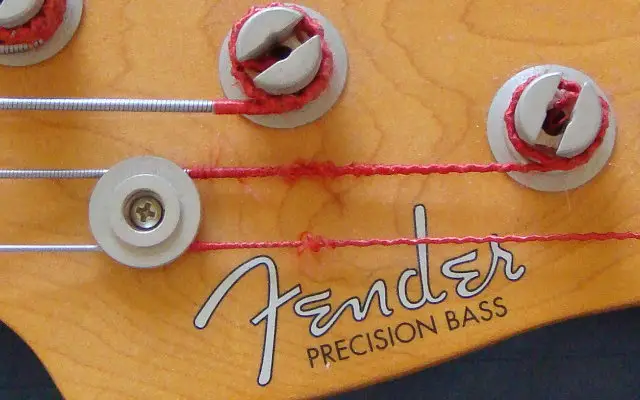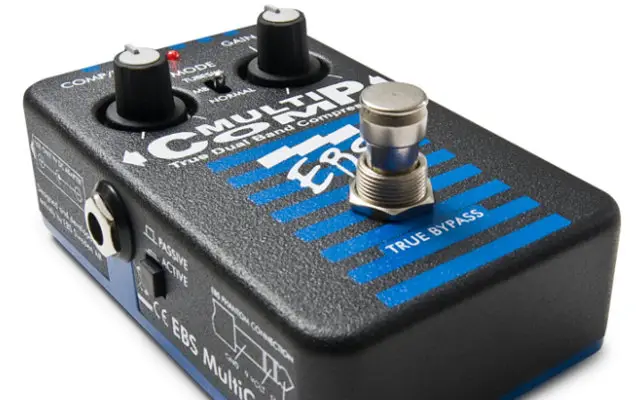There are so many
 Tim
Tim
Fender Telecaster Bass Guitar – Original or Reissue
The Fender Telecaster bass guitar was introduced in 1968. As its name suggests, it resembles the famous Telecaster guitar that became an iconic instrument across many genres of music. Somewhat of an oddity in the long line of Fender Basses, the Telecaster bass was a reissue of the Precision Bass that debuted in 1951. And, the P Bass itself borrowed some key design aspects from the original Telecaster guitar. Let’s take a look at this odd and interesting design cycle that became the Fender Telecaster bass.
Tube Amps vs. Solid-State Amps
Ever since solid-state amplifiers emerged in the 1960s, the debate has raged over which type of amplifier is better for bass. There has been what amounts to a “tube amps vs solid-state amps” war that has been waged in music stores, online, and between otherwise good musical friends.
For us bass players, the choice isn’t quite as volatile as it is for guitar players, many of whom would rather drink poison than play through a solid-state amp. Still, there are those bassists that swear by that natural, warm, fat tone that a tube amp delivers.
So the question is, what’s the difference between these amps, and what’s best for you? Oh yeah…and there’s also a third option.
What Does a Bass Compressor Pedal Do?
Most bass players have heard of compressor pedals, but not many really know what they do for your bass tone. Bass compressors come in several different forms, but all serve the same basic function. Whether it’s a cheap stomp-box compressor or a fancy high-end rack-mounted version, the idea is essentially the same: to compress your bass signal’s dynamic range. And if you’re still asking, “Yeah, but what does a bass compressor pedal do?” then read on.
Pino Palladino: Bass Superman
One of the most respected and admired bass players in music today, Pino Palladino has such an array of amazing bass chops and feel that it’s almost ridiculous. Pino’s ability to fit his unique style into any type of music and not only make it work but make it sound great is a rare skill indeed. It’s the combination of these qualities that make Pino Palladino a bass superman.
My Favorite Vintage Fender Custom Colors
When I first started playing bass more than 15 years ago, I noticed that Fender sunburst finishes were priced a little higher than solid colors. What’s interesting is that Fender only offered sunburst as the standard finish from the late 1950s through the 1960s. If you wanted any other color, it was a 5% up-charge, known at the time as a custom color job. They offered several custom colors, all of which were based on American automobile paint options of the era. I’ve listed 12 of my favorite vintage Fender custom colors from that time period.
Fender Fullerton Reissue Bass – A New Golden Era
In 1982, in an attempt to reclaim their audience’s deep affection that was fostered by the high quality of earlier instruments, Fender introduced their vintage reissue series. These guitars and basses intended to replicate the classic late 50’s to early 60’s instruments of Fender’s Pre-CBS golden era. The Fender Fullerton reissue bass guitars created quite a stir and have since become very collectible in their own right.
Mike Watt: Jammin Econo
Mike Watt is one of the most important punk and post-punk bassists to ever wield the thud-staff. His influence is far-reaching in the bass community, and his status in punk rock history is legendary. Watt’s musical philosophy encompasses everything from punk rock to Bob Dylan to John Coltrane and beyond.
Mike Watt is also one of the most exciting and dynamic musicians to see live. No matter who he’s playing with, the shows are loud, they are chaotic, and they are pure genius.
Fender Jazz Bass History – A Timeline 1960-1982
Fender introduced the Jazz Bass in 1960 as a “deluxe” model to augment the Precision Bass. Since its debut, the Jazz has stayed remarkably similar to its original design. There have, however, been many smaller changes over the years that are important not only to Fender Jazz bass history in general, but also as valuable year indicators for vintage Fender bass buffs.
Poly vs. Nitro Guitar Finish – Does It Matter?
Ask any two bass players about nitrocellulose versus polyurethane finishes and you’ll often get a heated argument. The debate over which finish is better has been raging for over 40 years now. Fender, and other manufacturers, have used both over the years. And, as vintage collectors clash with modern techniques and sensibilities, we’re left asking if the poly vs. nitro guitar finish debate is even worth fighting anymore.









